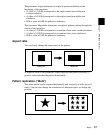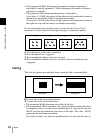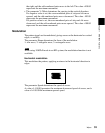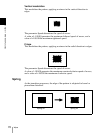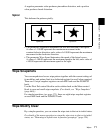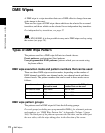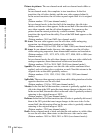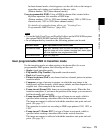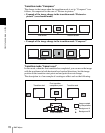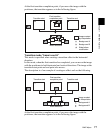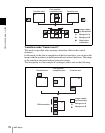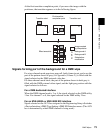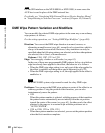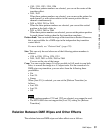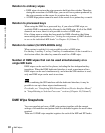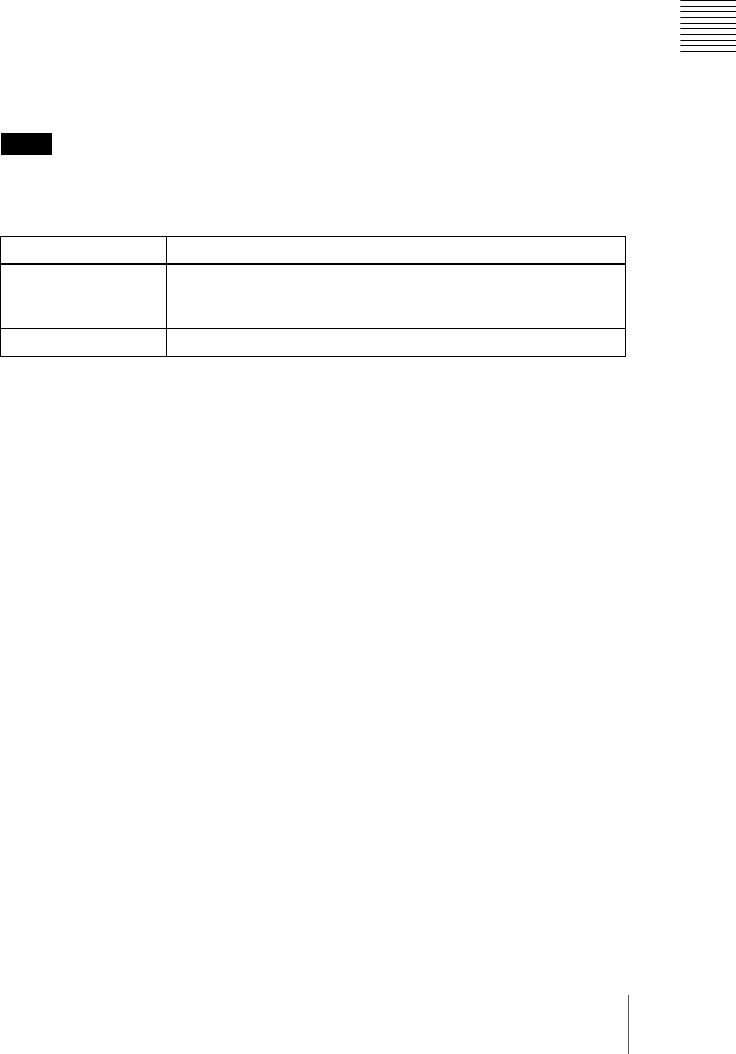
75DME Wipes
Chapter 1 MVS-8000 Functions
In three-channel mode, a brick appears over the old video as the image is
expanding and rotating, and switches to the new video.
(Pattern number: 3601 (three-channel mode))
User programmable DME: Using a DME keyframe effect created with a
keyframe operation, this executes a DME wipe.
(Pattern numbers: 1901 to 1999 (one-channel mode), 2901 to 2999 (two-
channel mode), 3901 to 3999 (three-channel mode))
For details of creating keyframe effects, see “Creating User
Programmable DME Patterns” (page 483).
Notes
• To use the Split, Page Turn, and Page Roll effects on the MVE-8000 requires
the optional MKS-8830M Nonlinear Effect Board.
• In an independent key transition, the following patterns can be used.
User programmable DME in transition mode
For the transition mode set when creating a keyframe effect for a user
programmable DME pattern, the following can be used.
• Single: single transition mode
• Flip tumble (Flip Tumble): flip tumble transition mode
• Dual: dual transition mode
• Picture-in-picture (PinP): one-channel and two-channel picture-in-picture
transition mode
• Compress: a type of picture-in-picture, in which the new image is the
background, and the currently visible image shrinks, and then expands to its
original size. (See example in the next item.)
• Frame in-out (Frame I/O): frame in-out transition mode. When the first
transition completes, if you move the position of the image, you can move it
both horizontally and vertically.
• Frame in-out H (Frame I/O H): a type of frame in-out mode, which is
specified when creating a transition effect in the horizontal direction.
The image movement is reflected at both the transition start point and end
point. (See page 77.)
The operation is carried out according to DME wipe patterns 1202, 1203, or
1204.
• Frame in-out V (Frame I/O V): a type of frame in-out mode, which is
specified when creating a transition effect in the vertical direction.
The image movement is reflected at both the transition start point and end
point. (See page 78.)
Execution mode DME wipe patterns that can be used
One-channel mode Slide, split, squeeze, door, 2D trans, 3D trans, frame in-out,
page turn, page roll, mirror, sphere, character trail, wave, ripple,
split slide, sparkle, user programmable DME
Two-channel mode Page turn, page roll



